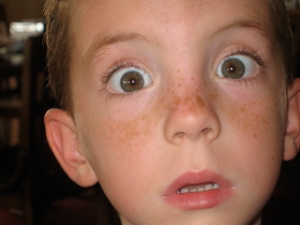When you are dealing with a threatening situation, you need to do some serious risk assessment. Depending on your chances of survival, fear can make you run away or it can make you fight. This is the well known fight or flight response. But fear can also elicit the opposite response: If threat is relatively low, it’s better not to act at all. For example, a rat that encounters a predator usually shows freezing behavior, in which all movement except breathing is suppressed. This behavior improves the rat's chances of staying undetected and prepares it to act if necessary.
 So what do humans do when they encounter mildly dangerous yet threatening events? In a recent study in Psychological Science, Roelofs, Hagenaars and Stins measured body sway while participants were standing on a force platform and viewed emotional faces. Their crucial finding was that passive viewing of angry faces (compared to neutral and happy faces) caused a significant reduction in body mobility: If you see an angry face, you sway less. This reduced mobility was accompanied by a reduced heart rate. Thus, involuntary bodily responses to social threat cues involve freeze-like behavior in humans, just like in animals. Interestingly, they also found that freezing behavior is most pronounced in people who are naturally anxious.
So what do humans do when they encounter mildly dangerous yet threatening events? In a recent study in Psychological Science, Roelofs, Hagenaars and Stins measured body sway while participants were standing on a force platform and viewed emotional faces. Their crucial finding was that passive viewing of angry faces (compared to neutral and happy faces) caused a significant reduction in body mobility: If you see an angry face, you sway less. This reduced mobility was accompanied by a reduced heart rate. Thus, involuntary bodily responses to social threat cues involve freeze-like behavior in humans, just like in animals. Interestingly, they also found that freezing behavior is most pronounced in people who are naturally anxious.
It seems like it doesn’t take much to get us ‘glued to the spot’. The next time you notice a poor little animal trying to be invisible, remember that you are probably doing the same when an angry individual looks you in the eyes...
Photo: Wikimedia Commons
References
Roelofs, K. & Hagenaars, M.A. & Stins, J.F. (2010). Facing freeze: Social threat induces bodily freeze in humans. Psychological Science, 21(11), 1575-1581 [PDF]